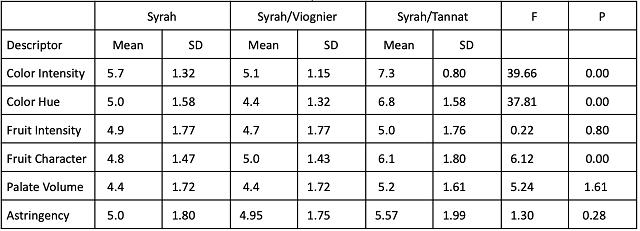Exploring the effects of co-fermentation in Syrah (2021)
Dawn Stein and Michael Heny
Doukénie Winery
Summary
Due to several aspects of its phenology, Syrah does not always reach its full potential in Virginia. At Doukénie, Syrah is often harvested early with light color and body. In its home region of the Rhône, Syrah is often co-fermented to fix color and blended with other varieties. The purpose of this experiment was to explore the effects of co-fermentation of Syrah using Virginia grapes. Two co-fermentation pairings were compared to a Syrah only fermentation: 85% Syrah/15% Viognier and 85% Syrah/15% Tannat. Co-fermentation with Viognier decreased color and tannin concentrations while co-fermentation with Tannat increased these measures. Color differences were also significant in sensory analysis. Co-fermentation also shifted the fruit character from bright/fresh/red to dark/dried/black with the addition of Tannat without increasing perception of astringency.
Introduction
Syrah is not commonly grown in Virginia, with only 36 tons reported from 12 bearing acres in the 2019 Commercial Grape Report1. Syrah is late to break bud, which allows it to avoid most frost events, with rapid ripening, but the berries shrivel when sugar levels exceed 21-22° Brix. It tends to exhibit vigorous growth, is susceptible to Botrytis, sensitive to bud necrosis, and shoots can be damaged by wind in early spring2,3. In regions with ample plantings such as the Rhône and Australia, wines can be high in alcohol with gentle tannins and ample midpalate weight. When underripe, this variety can have flavors of black pepper and burnt rubber while riper versions exhibit flavors of black fruits. In the Southern Rhône, Syrah is often blended with other varieties, providing the backbone to the CNDP blends while in the Northern Rhône it stands alone more often. Here, a small amount of Viognier is often interplanted and co-fermented with Syrah, producing a lighter wine3.
Doukénie is one of the few sites in Virginia growing this variety. It is often harvested early to avoid disease, leading to wines with light color and body. The purpose of this experiment was to explore the effects of co-fermentation of Syrah using Virginia grapes. Two co-fermentation pairings were compared to a Syrah only fermentation: 82% Syrah/18% Viognier and 82% Syrah/18% Tannat.
Methods
Viognier and Tannat were harvested on 9/24 and kept refrigerated until Syrah was harvested on 10/8. Syrah grapes were hand harvested and refrigerated overnight. The following day, grapes were destemmed and crushed into Tbins with the addition of 50 ppm SO2, 24 g/hL Tanin VR Supra, 80 mL/ton Color Pro, and 2 g/L Moyenne Plus. Average lug weights were used to determine the number of lugs of Tannat or Viognier to include in the co-fermentation bins, with a calculated inclusion of 18% exogenous grape variety for each co-ferment. With the exception of fruit composition, all other operations were the same between treatments.
Bins were inoculated with 20 g/hL Syrah yeast (Scottlabs) rehydrated in 30 g/hL GoFerm. Fermentations received 25 g/hL Fermaid K and 30 g/hL sugar during fermentation. Bins were pressed at the completion of fermentation, settled for 3 days, then transferred to barrel for malolactic fermentation. Wine was allowed to begin malolactic fermentation on their own. After 2 months, barrels were inoculated with 1 g/hL MBR Process malolactic bacteria. At the completion of malolactic fermentation (malic acid tested 0.01 g/L), barrels were treated with 50 ppm SO2 and topped.
Sensory analysis was completed by a panel of 21 wine producers. Due to restrictions put in place during COVID-19, sensory analysis was completed using shipped samples. Each wine producer received three wines in identical bottles, filled on the same day, each coded with random numbers. Two of the bottles contained the same wine while the third bottle contained the different wine. Participants were asked to identify which wine was different (a triangle test). There were four tasting groups with the unique wine in the triangle test balanced among the groups. Participants were then asked to score each wine on a scale of 0 to 10 for color intensity, color hue, floral intensity, fruit character (defined as a range of bright/fresh/red to dark/dried/black), spice and astringency. They were also given open ended questions to describe the wines. Results for the triangle test were analyzed using a one-tailed Z test. Descriptive scores were analyzed using repeated measures ANOVA.
Results
The timing of harvest for co-fermentation is sometimes difficult to coordinate, as varieties ripen at different rates in different vintages. At Doukénie in 2021, the main block of Viognier was harvested on 9/14. A few rows of Viognier were left to hang for use in co-fermentation, but were harvested on 9/24 to prevent field rot. Tannat was also harvested on 9/24. Both Viognier and Tannat were harvested into lugs and refrigerated until the Syrah was ready for harvest on 10/8.
All three bins fermented at similar temperature and rate (Figure 1). Three barrels of wine resulted from each bin fermentation. The addition of Tannat increased the TA and alcohol level of the wine while decreasing the pH slightly (Table 2). Co-fermentation with Viognier decreased the color (Figure 2) and phenolics (Figure 3) of the wine while co-fermentation with Tannat increased these measures.
Based on the sensory analysis, there were no significant differences in scores for floral intensity, spice, or astringency (Table 3). The Syrah/Tannat co-ferment received significantly higher descriptive scores than the other two wines for color intensity and color hue, defined as a shift from pink/red to purple/black (Figure 4). The wine made from Syrah only received the lowest scores for fruit character, indicating it was furthest toward bright/fresh/red end of the spectrum while the wine made from co-fermentation of Syrah and Tannat received the highest scores, indicating it was furthest toward the dark/dried/black end of the spectrum. The wine made from co-fermentation of Syrah and Viognier had intermediate scores for this characteristic (Figure 4).
References
(1) SMS Research Advisors. 2019 Virginia Commercial Grape Report. 2020.
(2) Wolf, T. K. Wine Grape Production Guide for Eastern North America; Plant and Life Sciences Publishing: Ithaca, New York, 2008.
(3) Robinson, J.; Harding, J.; Vouillamoz, J. Wine Grapes: A Complete Guide to 1368 Vine Varieties, Including Their Origins and Flavours, Illustrated Edition.; The Penguin Group: New York, 2012.
Table 1: Fruit chemistry for three treatments of Syrah (in-house data)

Figure 1: Fermentation kinetics for three treatments of Syrah (in-house data)
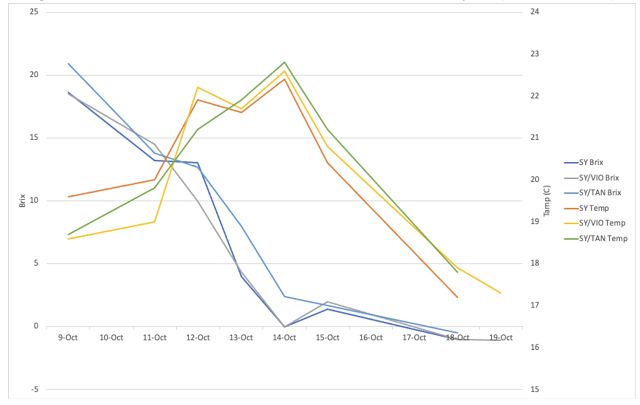
Table 2: General Chemistry for three treatments of Syrah. Glucose/fructose values were below 1.0 g/L for all barrels at each sampling date. Malic acid was below 0.15 g/L for all barrels at each sampling date (ICV labs).
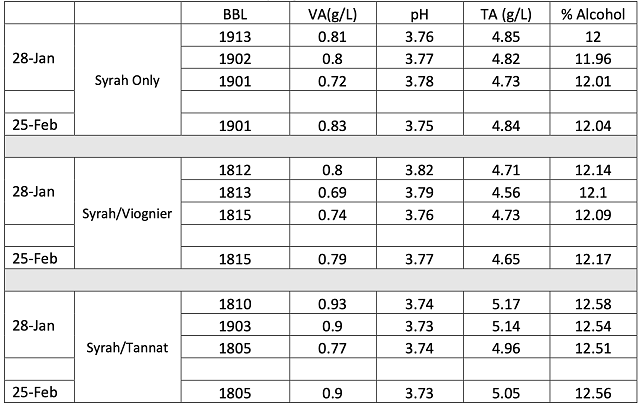
Figure 2: Color intensity for three treatments of Syrah at two sampling periods (ICV labs). Endcaps indicate free SO2 at the time of sampling.
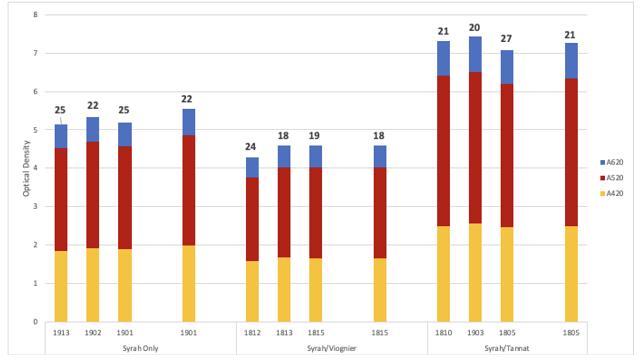
Figure 3: Phenolic measurements for three treatments of Syrah (ETS Labs)
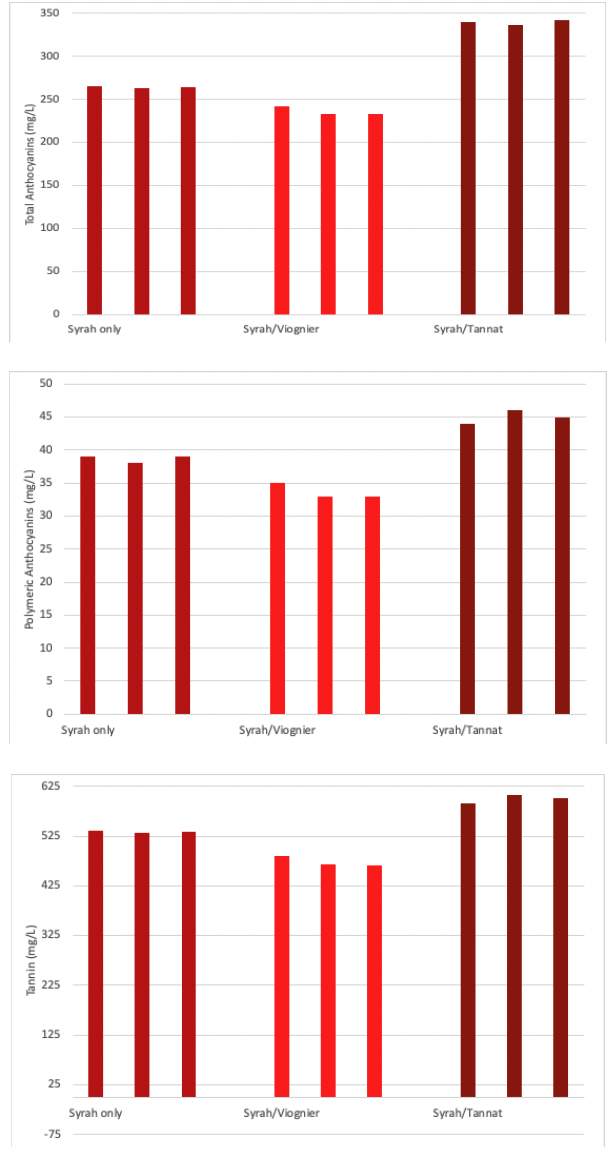
Table 3: Statistical analysis for descriptive scores from blind sensory analysis of co-fermented Syrah
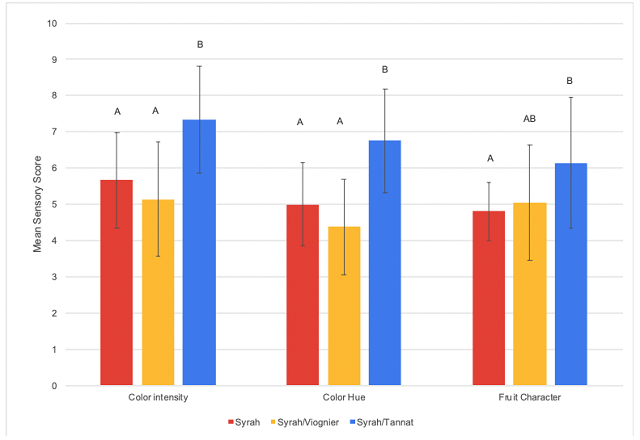
Figure 4: Repetition / Tukey (HSD) Analysis of the differences between the categories with a confidence interval of 95%
